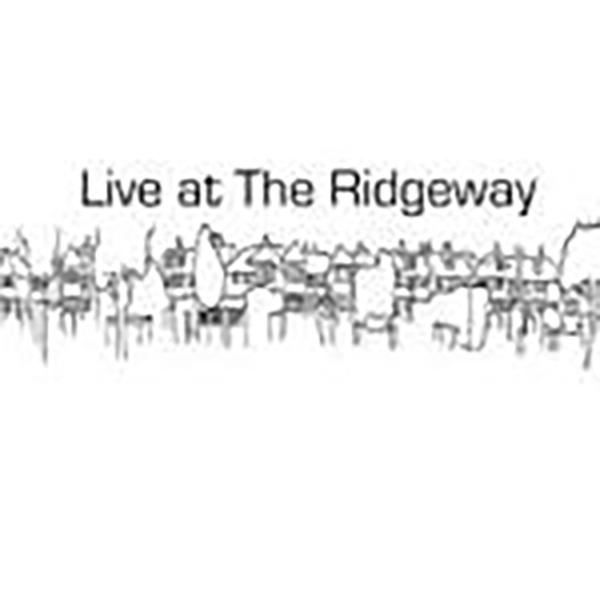
by Ian Mann
April 08, 2015
/ ALBUM
Gourlay retains a strong melodic focus throughout, his technical ability is unquestioned and overall these performances are commendably absorbing and accessible.
Calum Gourlay
“Live at The Ridgeway”
(Two Rivers Records 002)
The young Scottish born, London based double bass player Calum Gourlay has been a fairly frequent presence on the Jazzmann web pages. He is a reliable and versatile bassist who has appeared on a series of highly recommended small group recordings by pianist Kit Downes, drummer Dave Hamblett and by the saxophonists Trish Clowes, Rachael Cohen, George Crowley and Josh Arcoleo. He has also been part of the bands Aquarium, led by pianist Sam Leak and Indigo Kid fronted by guitarist Dan Messore. Gourlay has occupied the bass chair in the Scottish National Jazz Orchestra for many years and has also co-led his own large ensemble in conjunction with trumpeter Freddie Gavita.
Despite his big band credentials Gourlay also likes to go to the other extreme and play totally solo gigs on double bass. “Live at The Ridgeway” is one such performance and was recorded live by Alex Bonney on 3rd December 2014 at The Ridgeway, a musician’s house in Golders Green, in front of an invited audience. In effect the album was recorded in Gourlay’s living room and readers may also be interested to learn that The Ridgeway is also home to the Outhouse that gave drummer and composer Dave Smith the name for his band.
The circumstances of the recording might suggest that “Live at The Ridgeway” is some kind of bootleg but the album comes in a very professional looking package featuring the distinctive artwork of Alban Lowe whose designs have already graced albums by Partikel, Samuel Eagles, Ollie Howell and others. Bonney’s engineering and production skills ensure that it sounds good too.
The album is the second release on the London based Two Rivers Records, a musician led co-operative founded by singer, songwriter and pianist Alya Marquardt.
Solo recordings for double bass are comparatively rare with Dave Holland, William Parker, Barre Phillips and Miroslav Vitous some of the big names who have risen to the challenge. On “Live at The Ridgeway” Gourlay acquits himself very well in comparison with such exalted company. Gourlay has been featured as a soloist in the various bands he plays in, particularly with Trish Clowes’ groups, but it’s a real eye opener to hear his playing unadorned. The material on “Live at The Ridgeway” includes compositions by jazz giants Ornette Coleman, Charlie Haden, Thelonious Monk and Duke Ellington, a “pop” tune in the shape of Joni Mitchell’s “Both Sides Now”, plus two Gourlay originals.
The album begins with Coleman’s “Ramblin’”, played pizzicato and with Gourlay striking a good balance between the melodic and rhythmic functions of the bass. Deploying both plucking and strumming techniques he never loses the shape or focus of the piece and his virtuoso performance is enthusiastically applauded by a highly supportive audience.
Next up is “Chairman Mao” written by a fellow bassist, the much missed Charlie Haden. Again played pizzicato the piece sees Gourlay bringing out the beauty of Haden’s melody while simultaneously deploying a range of adventurous techniques to bring colour and texture to the music.
Two Thelonious Monk compositions are then played back to back, “Rhythm-a-Ning” and Monks’ Mood”. Gourlay has been working on a Monk related project with pianist Hans Koller, saxophonist Martin Speake and drummer Dave Dyson which intends to explore Monk’s entire repertoire so these two tunes must have felt like natural choices. Both pieces are performed pizzicato with Gourlay displaying an astonishing dexterity and precision on the lively, fast paced “Rhythm-a-Ning”.
“Monk’s Mood” is slower and more reflective, but no less impressive, as Gourlay explores leisurely and at length.
The title of the Gourlay original “What is This Thing Called Life” is an obvious allusion to the jazz standard “What is This Thing Called Love?”. The musical allusions on another virtuoso pizzicato performance are less obvious, at least to my untutored ears, but the brilliance of the playing is manifestly apparent.
Gourlay picks up his bow for the second original, simply entitled “Hendrix”. This stunning arco performance incorporates eerie overtones, savage outbursts of energy and a rich variety of grainy textures. It’s the most obviously “avant garde” piece on the album yet it’s also strangely accessible.
The pizzicato reading of “Both Sides Now” brings out the poignancy of Mitchell’s tune in a thoughtful, unhurried performance that captures the wistful mood of the song perfectly.
The album concludes with Gourlay’s stately pizzicato interpretation of Duke Ellington’s “Solitude”, another assured solo performance that progresses through a variety of phases and earns him a final tumultuous reception from his friends.
I was surprised by how much I enjoyed this album. Gourlay retains a strong melodic focus throughout which helps to draw the listener into his performances. His technical ability is unquestioned and overall these performances are commendably absorbing and accessible. However given the fact that he is a highly accomplished arco player I’d have liked to have heard him using more of the bow. “Hendrix” is a stand out but one or two more arco pieces would have given the album greater variety and colour.
Before concluding this review I’d like to congratulate Calum on this breaking news. He has been selected as one of ten semi-finalists in the International Society of Bassists Jazz Competition, so good luck to Calum with regard to this. Bring that Prize back to Britain!
I’ll leave you with this quote that was originally written about Dave Holland’s solo bass album “Emerald Tears” (ECM, 1977) - “no overdubs, no octave dividers, no piccolos, no electricity - just a man, a bass, his fingers, his head. It makes highly therapeutic listening”.
Those words apply to Calum Gourlay too. The pared down nature of “Live at The Ridgeway” may not appeal to every jazz listener but as an album it nevertheless has much to recommend it.
blog comments powered by Disqus